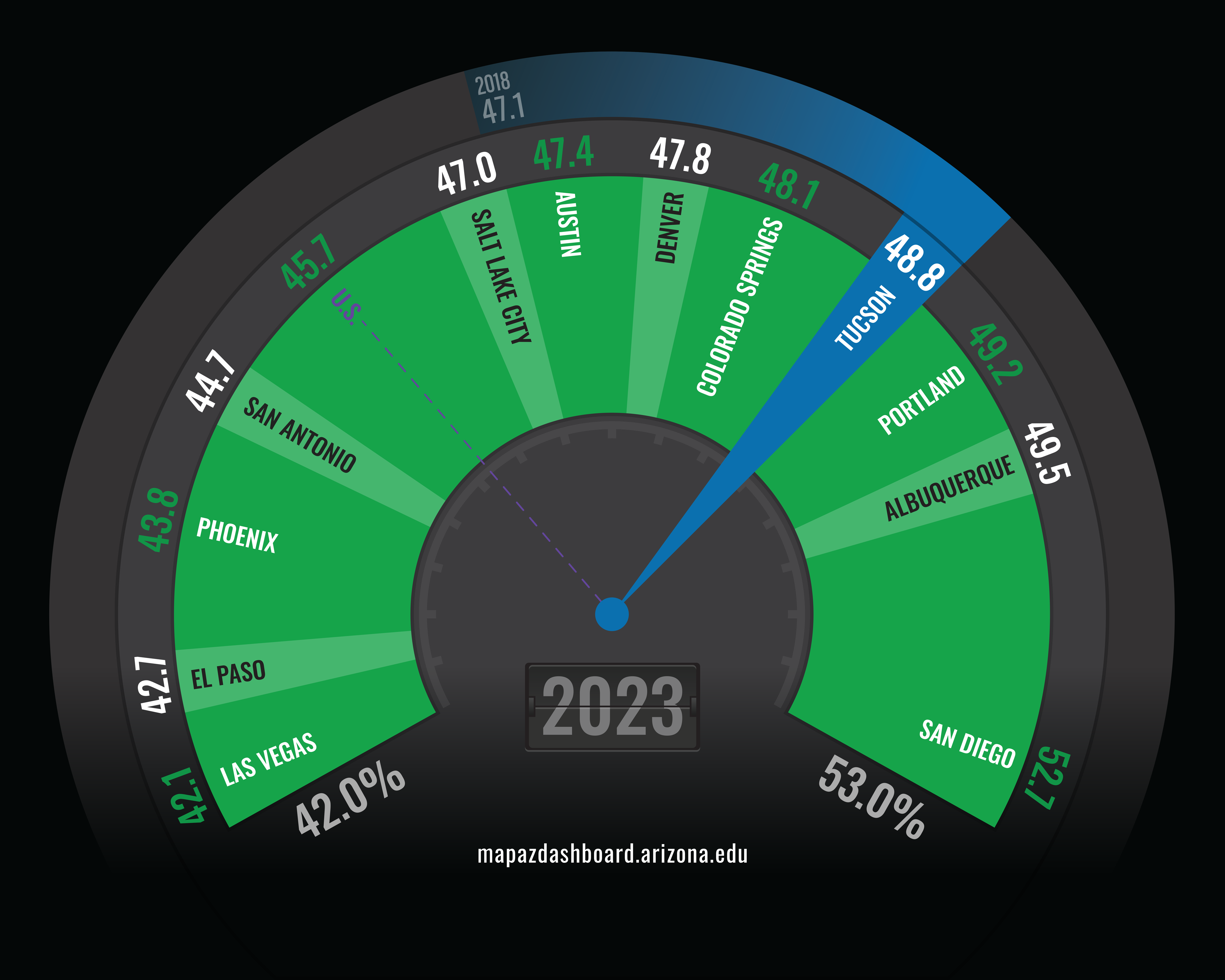 Explore Statistics on College Majors in Tucson, Arizona MSA
Explore Statistics on College Majors in Tucson, Arizona MSA
How are we doing?
Percent of College Graduates With Majors in Science and Engineering or Related Fields (2023)

In 2023, 48.8% of college graduates in the Tucson Metropolitan Statistical Area (MSA) reported a science and engineering or related field as their college major. That ranked Tucson fourth out of 12 western MSAs. The San Diego MSA led with a rate of 52.7%, and Las Vegas placed last with 42.1%.
Science and engineering or related fields accounted for the largest share of college majors in Tucson, Arizona, and the U.S. in 2023. Arts, humanities and other degrees formed the second largest share in Tucson, while business ranked third. The share of majors in science and engineering or related fields was slightly higher among non-Hispanic graduates than among Hispanic graduates in Tucson, Arizona, and the U.S.
Why is it important?
The choice of college major can have a profound impact on employability and earning potential throughout one’s career. The distribution of college majors in a region can also affect the location decisions of firms eager to capitalize on a talented and diverse workforce. Recent reports have found higher rates of full-time, year-round employment among science and engineering or related majors, as well as business majors in comparison to those who majored in education or arts, humanities, and other fields. Science and engineering and business majors also reported higher median wages and were employed in a wide range of industries. Projected job growth in science and engineering or related fields highlights the importance of monitoring college majors, as well as the need to close gaps in science and engineering or related degree attainment by ethnicity.
How do we compare?
In 2023, Tucson had a higher percentage of science and engineering graduates (38.1%) than Arizona (34.1%), or the U.S. (35.8%). This major also comprised the largest share of bachelor’s degrees in all three geographies. In Tucson, bachelor’s degrees in arts, humanities, and other accounted for the second largest share, while business degrees ranked third. Bachelor’s degrees in education were fourth, while science and engineering related, a field that includes para-medical and technician professions, accounted for the smallest share.
The share of science and engineering or related majors was 48.1% among Hispanic graduates and 48.9% among non-Hispanic graduates in Tucson. That generated a gap of 0.8 percentage points in Tucson. Arizona and the U.S. also had higher rates of science and engineering majors among non-Hispanic than Hispanic graduates.
How is it measured?
Data on the distribution of college majors are from the U.S. Census Bureau American Community Survey (ACS) five-year estimates. ACS began collecting data on the field of degree in 2009 and reports information for five degree categories: science and engineering, science and engineering-related, business, education and arts, humanities, and other fields. The universe for data on the field of degree is individuals over 25 years of age with a bachelor’s degree. Science and engineering include computer, mathematical, physical, and social sciences. Science and engineering-related include engineering and medical technology fields such as medical and engineering technicians, physical therapists, and other science and engineering support fields. These two major fields have been combined in figures one and three.












